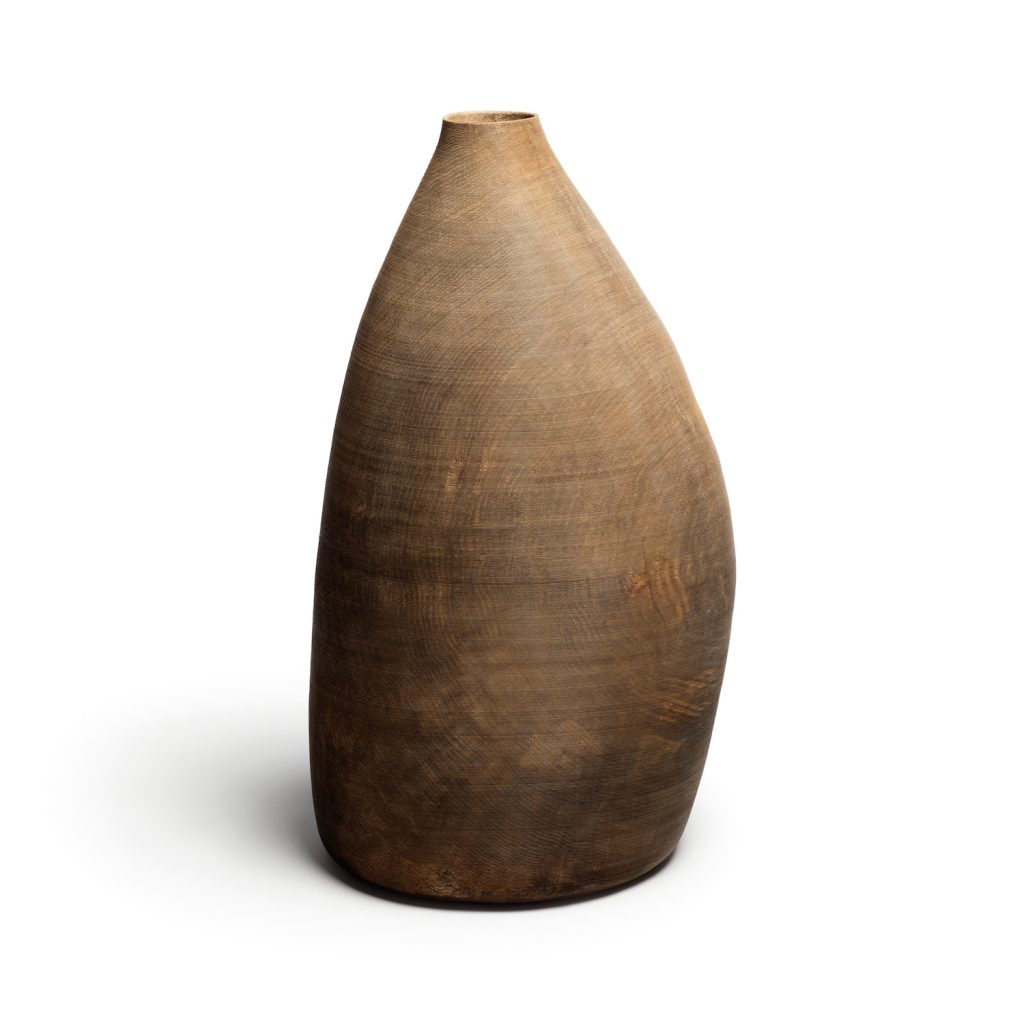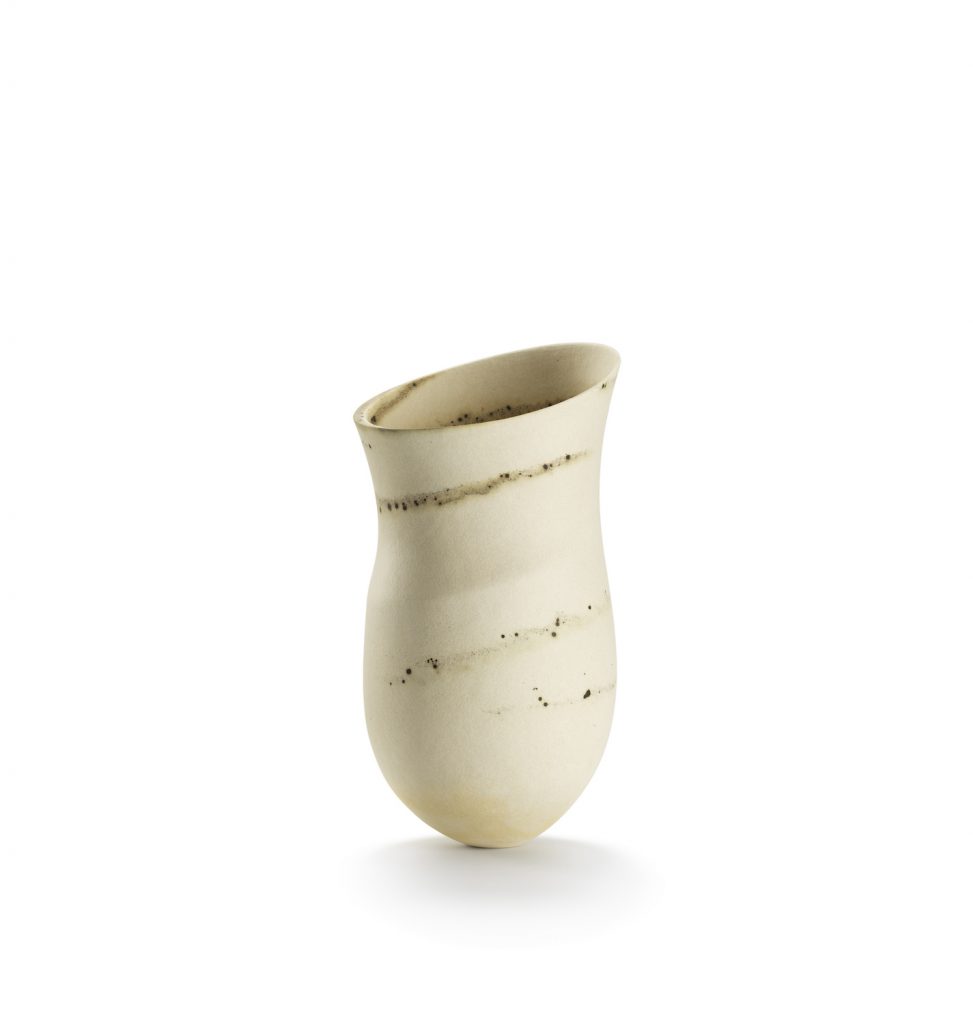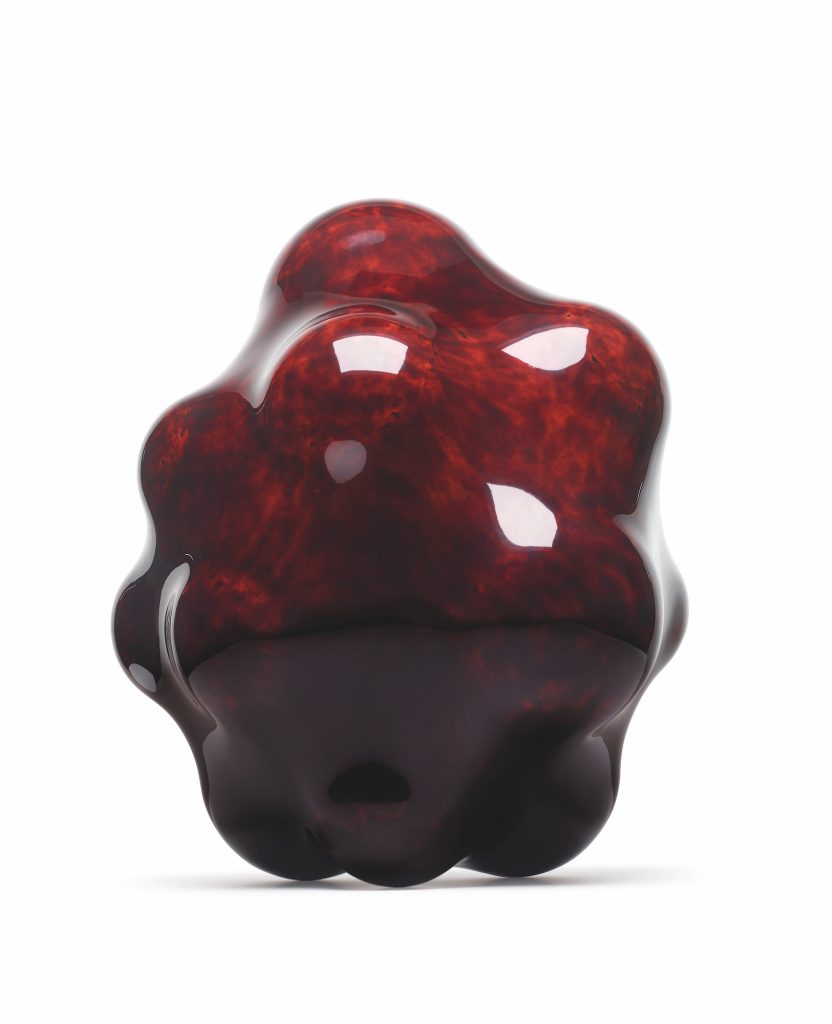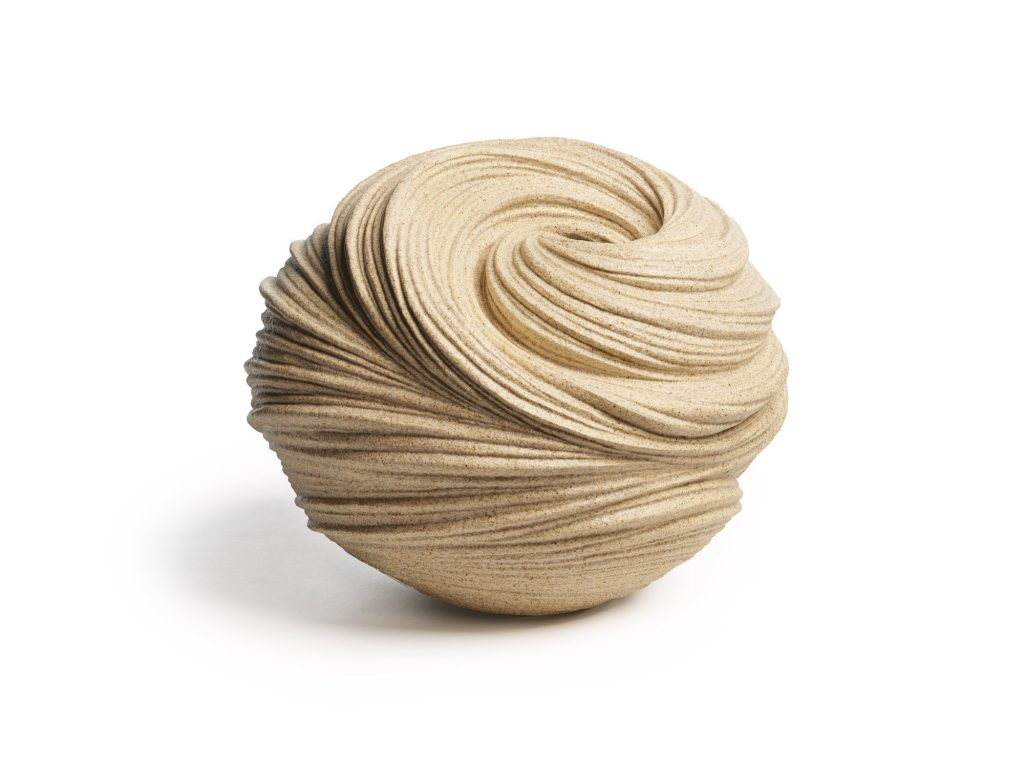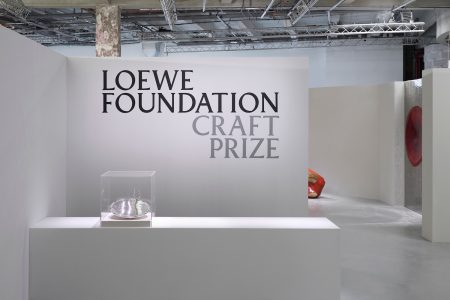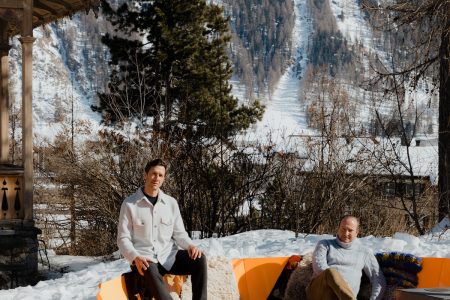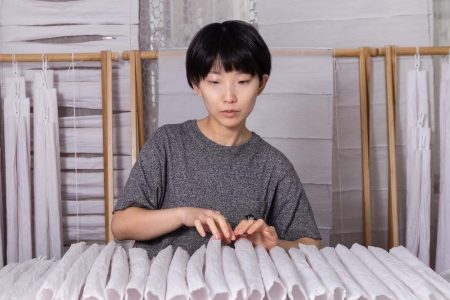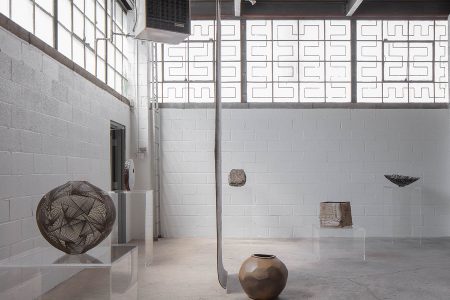7 Years of the LOEWE FOUNDATION Craft Prize
As the 2024 LOEWE FOUNDATION Craft Winner is about to be announced, we look back to a conversation held in 2023 between Sheila Loewe and Ernst Gamperl, who reflected on the impact of this global platform for contemporary craft – and where it is going next. This conversation was moderated by Emma Crichton Miller and originally published in our 2023 issue: TLmag39: The Culture of the Object.
The day we meet (October 2023) to speak is the closing date for the seventh edition (2024) of the world renowned LOEWE FOUNDATION Craft Prize. The international prize, conceived by LOEWE creative director Jonathan Anderson in 2016, is awarded to working artists whose exceptional craft skills, aesthetic vision and drive to innovate promise to inspire future generations of both makers and enthusiasts of art and craft. It rewards those it honours with a substantial financial prize but also, and perhaps even more importantly, a global platform of recognition for the sometimes overlooked creative ambition of craft- based artists and the searching power of their material creations. Each edition involves an exhibition of the work of thirty finalists in a different major capital city, reflecting the global vision of the prize.
A testimony to its success over the last seven years is that the sixth edition received 2,700 entries from 117 countries, with the thirty finalists representing 16 different nations.
The LOEWE FOUNDATION is today under the direction of Sheila Loewe, who passionately supports the place of craftsmanship in contemporary life. She is proud not only of the range of material disciplines the prize is open to, from ceramics and glass to horse-hair weaving and lacquer, but also of the wide range of makers from women artists in Iran to a collective in Mexico that weaves humble wheat-fibre strands into objects of astonishing beauty.
The first winner was Ernst Gamperl, a virtuoso wood-turner, whose extraordinary sculptural vessels, full of spiritual power, exemplify the meeting of human hand and soul with natural material. Ernst and Sheila discuss the importance of the prize in making space in the world for the values which animate his work and those of the subsequent prize-winners.
Emma Crichton-Miller: Ernst was the first winner of the LOEWE FOUNDATION Craft Prize. In 2024, you will celebrate the prize’s seventh year. As an outside observer, I would say that the prize has already transformed perceptions of craft. I wondered what the two of you thought about that, both from your different perspectives?
Ernst Gamperl: When I came back to Germany after winning in 2017, I realised that very few people knew about the LOEWE FOUNDATION Craft Prize. And it was very strange because it was a big prize. But internationally, in England and elsewhere, for example, I received important articles and the prize was well received already. But in Germany, there was nearly no reaction. But this has changed now. Seven years of the craft prize, continuing it forward with the prize winners and inviting crafts people from all over the world, this has given the prize a huge reputation. It is very good for the movement of craft itself. I had a conversation with the artist Toshiyuki Kita when we were jurors together, and Kita told me that it’s very important to have the counterpart of humanity and crafts to the digital world. The digital world is increasing enormously, which is, it’s okay, it is what it is and we cannot change it, but the counterpart to that is crafts, things done by hand. And this brings a little bit of humanity also into our life, which is very good. And the LOEWE FOUNDATION Craft Prize helps a lot with this.
E.C.: Is that your perception, Sheila?
Sheila Loewe: Yes, I think the LOEWE FOUNDATION Craft Prize has helped to revive interest in the craft world. And it also gives it important visibility. It helps many people who were perhaps not aware of the craft world to see the value of it. We are very often surprised that when we do the yearly exhibition – we think about the young generation being very digital and very obsessed with the now – that we have many young people, yes, with their mobile phones in their hand, but fascinated by this world – this world that is best represented by Ernst, that is not about fast or about digital, it’s not about now. It is about really stopping time and creating a slow experience. And in this sense, you know, Ernst’s work is very special. But it was much more important [to us] because he was our first winner; And having a winner like Ernst who shows the world that this is what we are about, this is what we want to support, people start to understand what we are wanting to do.
E.C.M.: What were the particular qualities in Ernst’s work that you felt represented what LOEWE wished to support [with the prize]?
S.L.: Ernst’s piece is one that speaks to your eyes and that attracts you. You want to touch it. It is a combination of the best skills and he is really a master in his skill. And at the same time, it speaks about the material, the wood, something that is alive for him and that he respects in the highest way. I would say this combination of skill and soul and that quality that is not always easy to explain, but which is about feeling.
E.C.M.: So each winner adds another physical expression of those qualities.
S.L.: Yes. We talk about how it is not easy to define the boundaries between art, design, craft, and we don’t really care about the boundaries. For us, craft is number one in our priorities. But we say that we try to support craft with artistic ambition. So, I’m especially proud of the expert panel [who make the first selection of the long- list of applicants] for finding Ernst for the first edition.
E.C.M.: And Ernst, how did you experience these boundaries that have to some extent been artificially drawn up between art, craft and design and so on? Did you feel you were consciously pushing against those in your work or did you just make freely according to what you wanted?
E.G.: I think one of the very important parts, something which Sheila said before, is the connection between the artist and his or her material. This is, I think, a very important part and for the LOEWE piece that I made, it is part of a collection I have done along with a printed book called Dialogue, and the dialogue with my material is very intense. I think [this dialogue is] very important for nearly all craft artists, creatives, craftsmen, because we are deeply connected with our material. It is a dialogue, it’s about talking, and we always try to get out the maximum expression or essence in our materials. And in my world, it’s always about research and go- ing deeper and finding more details that I can bring out and bring into my objects so that the objects start to talk to you.
S.L.: What Ernst is now explaining, we find it in many other craft artists, and we love that. It’s not only the way they create. It’s also the way they live: they respect the world, and they take care. It is much more than creating a piece. It’s how you are in this world, in this life.
E.C. Yes, it’s a whole ethos.
S.L.: And what I especially remember of Ernst’s work was that it was made with a piece of wood that had been felled by a storm. There is so much beauty in that. I think Ernst is in love with his material, and you can see the love story. And if you don’t see it, he can explain it.
E.G.: Indeed. This is why sometimes when I finish a new work, it is very hard to give it away immediately. I want to keep it around in my studio to get used to it, to get confident with it. And after a while, maybe three or four months, maybe half a year, I can move forward with sending it for exhibition.
E.C.M.: Well, it’s also part, I suppose, of loving the natural world or just the world through these materials. And so it’s part of you when you interact with that world and when you then have to give it away, it is giving away a part of that dialogue.
S.L.: Because for us, Ernst was the first winner, it was the first of everything. The LOEWE FOUNDATION has held a very important poetry prize for 36 years, and we know quite a little bit about poetry. But this was a project in which, with Jonathan Anderson, we started from scratch. So everything was really incredible – how the craft artists were helping us before we created the prize. When we started to think about what, how, and so on, everyone was so generous with their time. And I remember the first time that we went to visit Ernst, it was for us also the first time visiting the studio of the first winner, the first everything. And then we were together in New York. Ernst has a very special place in our hearts.
E.C.M.: I wanted to think a little further about the special nature of the kind of work that artists like Ernst and others of your winners undertake. Which is, was your ambition to set out to preserve a set of traditional skills, because these skills are in danger of disappearing? Or was it more that you wanted to encourage people who had those skills to be more ambitious in the creative use of them?
S.L.: I think it’s a combination. I think when you find an artist like Ernst, who has the best skills and he can innovate and move forward, I think the result is really amazing. We are all very worried about skills that have already disappeared, and many more will disappear if we’re not reacting and if we are not helping teach young people. The LOEWE FOUNDATION Craft Prize – perhaps it doesn’t sound very modest if I say, but it is a generous project. We wanted to support the craft world. We were not looking for this or the other benefit. And the things that worry us all who are close to the craft world are about preserving their skills. And once you have preserved the skills, if you can innovate and create beautiful new things, I think it’s fantastic.
E.G.: I think that the platform is important as well, no? That we have, as artists or craftsmen, we have the platform to show our pieces to the public. And if there’s a movement then young people are going to do something, and the skills are also going to come back, even if they were a little bit hidden. For example, if I speak about my own career, I did a traditional master of woodturning program, but I know that what I learned during this training helped maybe 10 percent for my artwork. The rest completely happened with trial and error in my studio. If I make a so-called error, but I like the result, I might also cultivate these errors and create something new. So, I think I have to come back to what I said before, that the sense of our work and of our creativity is always the dialogue with the material and finding new possibilities. I remember when I was starting to sell my work, no gallery was interested. I went to fairs in Paris and in Frankfurt and I had my own booth and sold to my clients, mostly interiors shops. And no gallery was interested in bringing my pieces to the art fairs. But this has changed now also thanks to the LOEWE FOUNDATION Craft Prize, that we have a platform now to promote our work.
Lise Coirier: I have a question about the fact of being avant garde with your work, Ernst, to feel that at one point nobody understood your work. Could you tell us a bit more about this feeling of being ahead of your time and now being so recognized that maybe it’s a struggle as well in this world of galleries that try to get your work?
E.G.: You are right that when I started people always laughed a little bit about my pots. Doing pots and also woodturning was not really something fashionable. People didn’t take it seriously. But I had a deep passion to do this even though in the beginning it was not easy. It was hard to find places where I can sell my pieces, but then, I saw my pieces and I saw them getting better and better. So, this gave me confidence. I had received some small German craft prizes in the 1990s, but it was very local, and I would say with the LOEWE Prize, craft became extremely global, which is very good.
E.C.M.: But you, Sheila, through the LOEWE FOUNDATION Craft Prize, have helped make this work and this way of creating things from natural materials, fashionable. And by that, I don’t mean in a frivolous way, but you’ve encouraged people to see the value and understand the strength and beauty of these objects and why they matter.
S.L. It is amazing. We talk about the loss of craft skills in places like Germany or in the UK or in Belgium, but there at least the state or some of the cultural institutions, they care about skills. But the world is very big. And there are many examples where they have been already lost, or soon will be. But, one of the beautiful things about the LOEWE FOUNDATION Craft Prize is that we are connecting sometimes to places that we don’t understand or know very well. For example, in the last edition there were more than 200, mostly women, from Iran, submitting to our prize. A country where there is no LOEWE shop or LOEWE perfume, but they know about the LOEWE FOUNDATION Craft Prize and they submitted their work. This was not from advertising but it is just that all our finalists became, without wanting to, the best ambassadors of what we want to support. People like Ernst, who are travelling and saying that [the prize] is really worthwhile; It is a serious project; It is not about marketing but it is about supporting craft; We then become better known around the world, and this makes us very proud.
E.C.M.: So how do you think you want the prize to develop? What are your ambitions for the next seven years?
S.L.: We are not planning to do many big changes, but perhaps, open it to new things in the craft world, perhaps more craft with technology. Ernst’s work is beauty, it is skills, it is magic, it is everything. But we’re open to finding and to learning about other things that are being done in the world of craft.
E.G.: It also appears by itself, maybe? Just seeing what the artists are trying to bring into the judging system and what’s going on in different places, how craft is developing.
L.C.: And I think that’s also the source of the sustainability of the prize of the prize and the fact that you do your own research on the artists who apply and who want to be part of this community. What do you think, Sheila, about these aspects of creating a community and fostering this cross-cultural dialogue in this world of craft?
S.L. I think we are a window. We have become an interesting window to present the most innovative and undiscovered works in the world from many places, because that Germany has super craft artists, we all know, also Korea, Japan, but the different discoveries that you can find in every edition, I think that is one of the things that has value for us.
E.C.M.: And also what it does is it broadens the sense of what the art world is because there was a very particular view of what mattered and what counted in terms of cultural production, but by expanding that and saying well, look, people in other parts of the world, they see this as important, they love these materials, they work in this way, and giving a platform to value all these different ways of creative expression I think is very important.
S.L.: And also, Emma, apropos, what you are saying, for us, it’s also interesting to note that we are open to all categories. We are not a ceramic prize or a wood prize. And something that is important is that we don’t only have one winner. The first winner was Ernst, but we had 30 finalists and for each edition, we have had 30 craft artists in the same exhibition and the same catalogue. And this is as important to us as the single winner.
E.G.: That is quite interesting because I had already received prizes in Germany and Australia, but the very special thing with the LOEWE FOUNDATION Craft Prize is the finalists are all coming together and we can have lunch together. And we can connect to each other and we can talk to each other and it’s something very special.
S.L.: What Ernst says is, I think, a very important part of the prize, because we fly in the finalists from all around the world, and they spend two, three days together, and there’s always a very beautiful relationship among the finalists of every edition. They support each other’s work and remain in touch, so it creates a kind of craft family.
E.G.: You remember, Sheila, the evening we had together in Madrid having a drink with the full moon? I will never forget, it was very special.
S.L.: This moment that Ernst is describing, we were sharing it with the winners of one of the special mentions, who was a Mexican couple. They had no passport before coming to Madrid for the finalists exhibition. They had no internet and someone from Mexico City wrote a letter to this village in the middle of Mexico telling them there is a prize that you should submit to and they didn’t speak English. So everyone was helping them to submit and they won one of the special mentions and we were all crying because, yes the piece was really fascinating, but the people and the story behind it was like, wow, it’s really making sense to support this. And this is a very different craft from what Ernst is doing. It was very special to have them, to show the range.
E.C.M.: I’m interested in this point that Ernst brought up, but then you’ve both now discussed it more, which is this ques- tion of confidence and the fact that once people can meet, they can understand these things are valued. They can be then encouraged to be more ambitious. To go fuller with their own instinct for how they should use the material. And that can only mean that works of greater meaning are produced. And you experience that in your life, Ernst, in your own making, that you felt emboldened to make pieces of greater ambition. And presumably the artists in Mexico then felt that people recognised what they are doing and thought: “We can do more like that.”
E.G.: Exactly. It’s encouraging them, the artists to go forward. And this is very important. We have a lot of alone time in our studio, surrounded by our work. And I have moments when I don’t see the quality of my work because it’s too close to me. And I thought, is it good? Is it bad? But when you can show it in public and people are reacting positively, you get confidence and it gives you the power that encourages you to go forward.
E.C.M.: It’s finding a language in which to express the virtues of these objects, why they matter, why they are significant, why they have such a contribution to make to our culture, and to encourage people to understand that, and the prize is crucial for that, but also the galleries, by moving the objects from interior shops into galleries, and then into people’s homes in a different way, and into museums.
S.L.: The first time I went to Seoul, I was having lunch with some of our finalists and they told me that for Korean artists, the dream used to be to have a piece commissioned by a museum and nowadays, for Korean craft artists, the wish is to be finalist of the LOEWE FOUNDATION Craft Prize. I thought it was a joke. But no, we were in Seoul and it was, well, it was very moving.
L.C.: Yes, it’s because you’ve been creating a community. You give some kind of meaning to people who struggle making craft for a living and I think that’s also allowing them to be in contact with each other. I feel that also it’s just not only a digital platform but that it is much more about the human connections and a physical connection and that’s the physicality of the crafts, which is actually the true meaning of doing something from your hands.
S.L.: I remember when we started to think about the rules, the jury, the expert, everything, one of the craft artists that was very generous with us, told me that craft artists can think with their hands. And I was so admiring of this because I can only think with my head, but they can think with their hands. And I think this is, this is magic.
E.G.: Yes, you know, someone said to me after I won the prize that now I would get a big ego from all the attention. My answer was, it’s not possible because when I’m going the next day in my workshop, and I’m alone with my material, everything goes back to the process. It’s very simple, because when you want to make nice objects, you always have to be grounded. You have to go deeper into the material to have the dialogue with the material. And this helps you to stay grounded, even if you get high prices and a good reception for your work.
www.craftprize.loewe.com
@loewefoundation

